 |
||
|
||
| ||
 CONTENTS
So, today we will have a look at the MX440-8x as a new competitor of the ATI RADEON 9000 and SIS Xabre400. Theoretical materials and reviews of video cards which concern functional properties of the NVIDIA GeForce4 MX GPU
Today we have five cards from Taiwanese manufacturers. You all know the names of Albatron, Gainward, Leadtek, MSI and Prolink (PixelView) very well. They tried to attract attention by new accessories and a weird appearance. CardsAll the cards have |
| Albatron GeForce4 MX480 | |
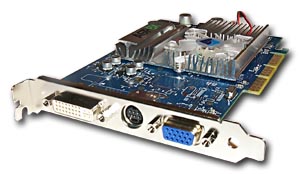 |
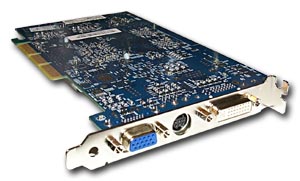 |
| Gainward GeForce4 PowerPack Pro/600-8X XP Golden Sample | |
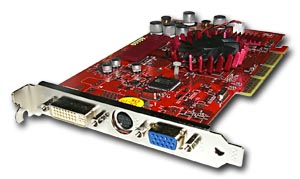 |
 |
| Leadtek WinFast A180 DDR TH MyVIVO | |
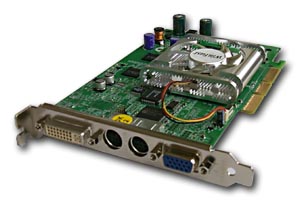 |
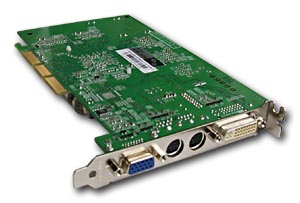 |
| MSI MX440-8x | |
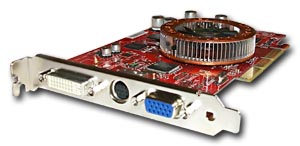 |
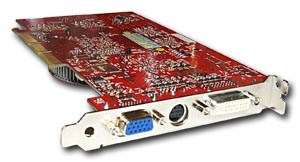 |
| Prolink PixelView GeForce4 MX440-8x | |
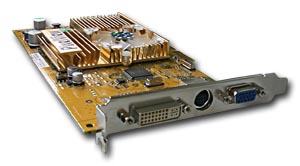 |
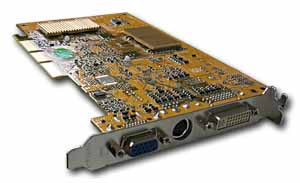 |
| Albatron GeForce4 MX480 | |
|
This card comes with Samsung memory modules of 3.6ns access time. The card works at 300/256 (513) MHz. The chips's frequency is higher by 25 MHz than the NVIDIA's recommended one. |
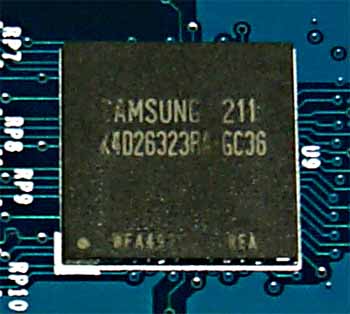 |
| Gainward GeForce4 PowerPack Pro/600-8X XP Golden Sample | |
|
This card comes with Samsung memory modules of 3.3ns access time. The card works at 275/256 (513) MHz in the standard mode and at 300/300 (600) MHz in the Enhanced mode. |
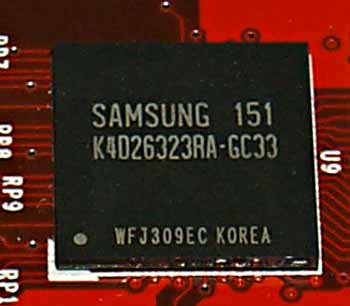 |
| Leadtek WinFast A180 DDR TH MyVIVO | |
| This card comes with Samsung memory modules of 3.6ns access time. The card works at 275/256 (513) MHz. | 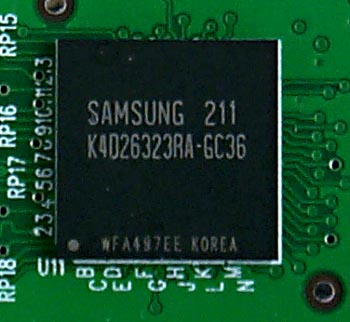 |
| MSI MX440-8x | |
| This card comes with Hynix memory modules of 3.6ns access time. The card works at 275/256 (513) MHz. | 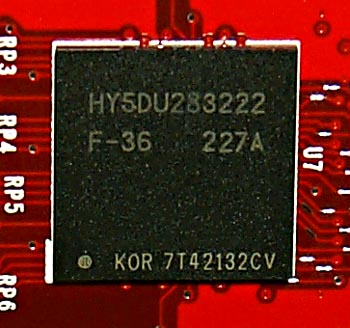 |
| Prolink PixelView GeForce4 MX440-8x | |
| This card comes with Samsung memory modules of 4ns access time. The card works at 280/260 (520) MHz. | 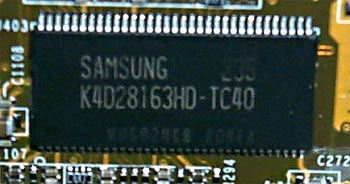 |
I consider that 128MB of the memory make the AGP8x a dead weight, as we could see that in the review on NV28/NV18. And the high scores of this card are on the account of a high clock speed of the memory in comparison to the previous MX440.
The developers from Gainward and Albatron are above all. In spite of the entirely reference design of the Gainward's solution it comes complete with the faster memory (3.3ns), and the chips were taken only those which proved to work flawlessly at 300 MHz. That is why a user can start up this card at 300/600 MHz not worrying that it might overheat. It also concerns the Albatron's solution though it's bundled with the 3.6ns memory. This is in fact an MX 460: the chip's clocked at 300 MHz, 3.6ns memory able to work at 275 (550) MHz.
Here is how the coolers look like:
The coolers hide the GeForce4 MX440-8x GPU:
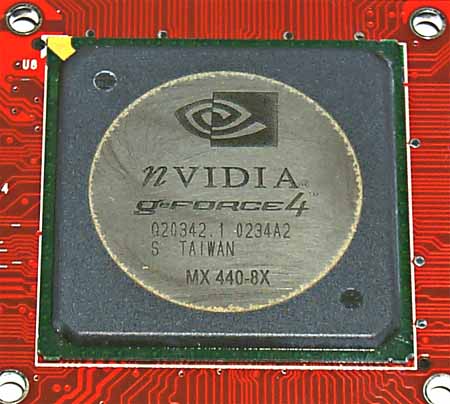 All the cards, except the Albatron's one, are equipped with the Philips 7114 codec controlling VIVO: 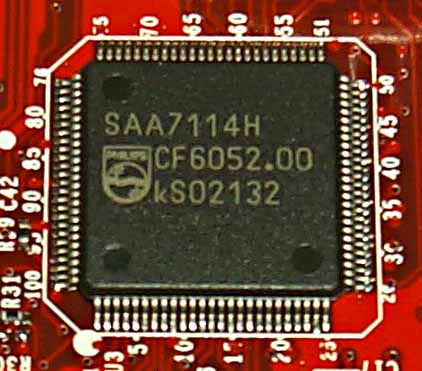 The Albatron's card has no external codec and TV-out is supported by the GeForce4 MX 440. As you know, Leadtek produces the TDH (TH) series which supports hardware monitoring. Some time ago we dealt with some cards coming with this function. It monitors the temperature of the card and a speed of rotation of the fan of the chip's cooler. There are LEDs on the card which notify about overheating and AGP 8x mode activation. The monitoring works via the WinFox II utility which comes with the card on a CD with drivers. Gainward supplies with its card the ExpertTool utility which makes adjustments for 2D simpler and also incorporates an overclocker. With this utility you can set the Enhanced Mode, i.e. set the frequencies of 300/300 (600) MHz. And you don't need any utilities to set 300/512 MHz forthe Albatron's card. Now it's time to estimate the boxes and their "insides".
|
| All video cards ship in the retail packages. |
That's all we had to say about peculiarities of the card.
| Albatron GeForce4 MX480 | 300/513 -> 338/652 MHz |
| Gainward GeForce4 PowerPack Pro/600-8X XP Golden Sample | 300/600 -> 340/696 MHz |
| Leadtek WinFast A180 DDR TH MyVIVO | 275/513 -> 325/640 MHz |
| MSI MX440-8x | 275/513 -> 320/644 MHz |
| Prolink PixelView GeForce4 MX440-8x | 280/520 -> 320/580 MHz |
|
As expected: the faster the memory, the higher the overclocking potential. And I must note that the Gainward GeForce4 PowerPack Pro/600-8X XP Golden Sample and Albatron GeForce4 MX480 have an extremely high potential. Note:
 Test system and driversTestbed:
In the tests we used NVIDIA's drivers of v40.72. VSync was off, S3TC was off. Test resultsBefore we start examining 2D quality I should say that there is no a complete technique of objective estimation of this parameter because:
As for the tested samples, together with the ViewSonic P817 monitor and BNC Bargo cable the cards showed excellent quality at the following resolutions and frequencies:
Game 1, Low details
 As you can see, the new solutions from NVIDIA outedge the RADEON 9000 Pro, though the latter is very close on the heels. But the cards from Gainward and Albatron are undoubted leaders. Look how strongly the GeForce4 MX based cards depend on the memory's speed. Although it differs from the GeForce2 MX, but, still, the low effectiveness of the memory throughput makes its effect. Game 2, Low details
 Now we have another leader... but it has nothing with the Gainward's and Albatron's cards which are still ahead. Game 3, Low details
 The forces are almost equal in high resolutions (the Gainward GeForce4 PowerPack Pro/600-8X XP Golden Sample thrives again followed by the Albatron GeForce4 MX480). 3D Marks
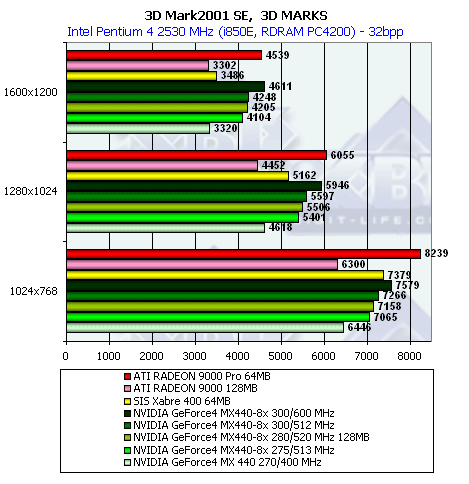
The NV18 in all three cards fights only against the ATI RADEON 9000 Pro; the RADEON 9000 is far behind in speed and the SIS Xabre400 displays a lower-quality picture. Also remember that the ATI RADEON 9000 Pro supports the DirectX 8.1 entirely while the NV18 (MX440-8x) only pretends to support vertex shaders and doesn't know about pixel ones at all. Below are the summary diagrams from our 3Digest where you can find thorough information on performance of such cards. The overclocked cards are marked with red color, the sign o/c (overclocked) is followed by the frequencies reached.
ConclusionSo, do the cards based on the chipsets without DirectX 8.1 make sense, even if they are buttered, with AGP 8x?... Well, yes! While the programmers from ATI are messing up with games and drivers, when one thing is cured and another damaged, the GeForce4 MX based cards will remain popular! Because beside shaders and beautiful waters from Morrowind, users need stability in games and certain protection from bugs. And the RADEON 9000 has a lot of troubles in this respect, though if it had good drivers, the GeForce4 MX would be smashed to pieces :-). At present, cards based on the ATI have very scarce accessory packs at that. And VIVO is supported quite seldom on the RADEON 9000/Pro.
Highs:
Andrey Vorobiev (anvakams@ixbt.com)
Write a comment below. No registration needed!
|
Platform · Video · Multimedia · Mobile · Other || About us & Privacy policy · Twitter · Facebook Copyright © Byrds Research & Publishing, Ltd., 1997–2011. All rights reserved. |